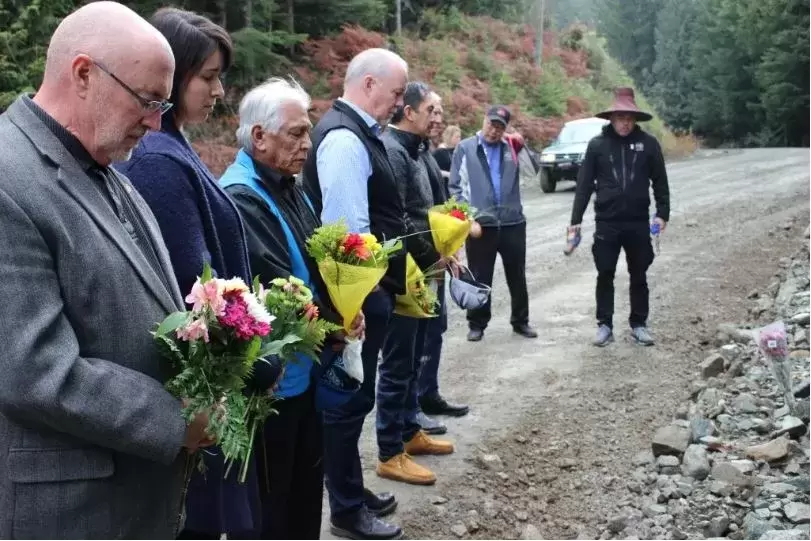An independent review of a bus crash that killed two University of Victoria students during a field trip to Bamfield concludes that future trips cannot be made at night if the logging road remains in its current state.
This was one of 43 recommendations released June 25 by Ross Cloutier, an expert in outdoor risk management hired by the university in the aftermath of the Sept. 13 tragedy that took the lives of John Geerdes and Emma Machado. Both first-year biology students were 18, part of a 45-student field trip to the Bamfield Marine Sciences Centre last year. With an oncoming vehicle approaching, the accident occurred when a chartered bus slid from a narrow section of the 85-kilometre road at 7:55 p.m. Other passengers on the bus endured injuries when the vehicle flipped over after falling down an embankment.
After months of interviews with victims, their families, school staff and witnesses, Cloutier determined future trips to the marine sciences centre can be made safely – but only if the road is driven properly according to conditions in daylight hours. Other recommendations include the need for pre-determined travel itineraries and a satellite phone on school travel vehicles. The accident occurred halfway down the road from Port Alberni, where no cellular coverage is available.
The use of a pilot car that would travel in front of a larger vehicle is also being explored, as is bringing in VHF radio for communication with oncoming traffic on the road.
The consultant’s report notes that the Bamfield Marine Sciences Centre hosted 112 school field trips over the 2018-19 fiscal year, but only eight of these groups arrived later in the evening. Two of these after-dark arrivals were from UVic.
“We fully accept the review’s recommendations and are already working diligently to implement them to help prevent an accident like this from ever happening again, to improve planning for field trips off campus and to allow us to more effectively respond to critical incidents,” said UVic President Jamie Cassels in a statement. “As leaders, we have learned important lessons that will make our programs and relationships with our community stronger.”
“The condition and suitability of the logging road as an essential corridor between Bamfield and Port Alberni continues to be a concern. Of the 85 kilometres, only 10 kilometres are paved,” stated UVic in a press release announcing the consultant’s report. “Cloutier notes that with appropriate road improvements a number of the above additional measures may not be necessary.”
Travelling Bamfield Main is a regular part of life for members of the Huu-ay-aht First Nations who live in the village of Anacla, which is located near Bamfield, as well as Ditidaht members who use part of the road to reach their home community on Nitinaht Lake. Since the road opened in the 1970s the Huu-ay-aht have lost eight members on the dangerous passage, and as recently as in early June Stan Coleman, a forester who works with the First Nation, narrowly survived a head-on collision with a logging truck.
For years the Huu-ay-aht have been lobbying for improvements to the road, most recently exploring the process of chip sealing with a solidifying combination of asphalt and fine aggregate. In November Premier John Horgan took the 78-kilometre journey to Anacla to discuss improving the road, when he directed the formation of an action group to determine how upgrades can be done.
In a press released issued on June 26, the Huu-ay-aht First Nations noted that the consultant’s report should have gone one step further to recommend immediate upgrades to the hazardous route.
“The report refers to the road as dangerous and makes recommendations on steps they can take to travel it more safely, but what we really need are significant improvements to the road itself,” said Chief Councillor Robert J. Dennis Sr. “No one else should lose their life on this road. It is time to chip seal it and make it safe for everyone who travels it.”
“The Machado and Geerdes families have asked that the road improvements be carried out as a legacy to their children instead of any form of memorial,” explained Huu-ay-aht Tayii Ḥaw̓ił ƛiišin (Head Chief Derek Peters). “Since the road opened in the 1970s, Huu-ay-aht has also lost eight citizens and witnessed countless accidents on the dangerous road – including my grandfather. I would like this project to be done as a legacy for every life that has been lost on the Bamfield Road.”







